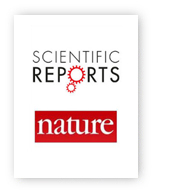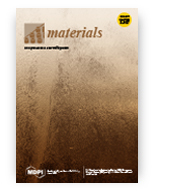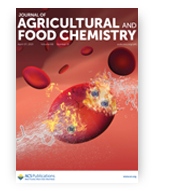Age-dependent ataxia and neurodegeneration caused by an αII spectrin mutation with impaired regulation of its calpain sensitivity
Arkadiusz Miazek, Michał Zalas, Joanna Skrzymowska, Bryan A. Bogin, Krzysztof Grzymajło, Tomasz M. Goszczynski, Zachary A. Levine, Jon S. Morrow, Michael C. Stankewich
Scientific Reports
 The neuronal membrane-associated periodic spectrin skeleton (MPS) contributes to neuronal development, remodeling, and organization. Post-translational modifications impinge on spectrin, the major component of the MPS, but their role remains poorly understood. One modification targeting spectrin is cleavage by calpains, a family of calcium-activated proteases. Spectrin cleavage is regulated by activated calpain, but also by the calcium-dependent binding of calmodulin (CaM) to spectrin. The physiologic significance of this balance between calpain activation and substrate-level regulation of spectrin cleavage is unknown. We report a strain of C57BL/6J mice harboring a single αII spectrin point mutation (Sptan1 c.3293G > A:p.R1098Q) with reduced CaM affinity and intrinsically enhanced sensitivity to calpain proteolysis. Homozygotes are embryonic lethal. Newborn heterozygotes of either gender appear normal, but soon develop a progressive ataxia characterized biochemically by accelerated calpain-mediated spectrin cleavage and morphologically by disruption of axonal and dendritic integrity and global neurodegeneration. Molecular modeling predicts unconstrained exposure of the mutant spectrin’s calpain-cleavage site. These results reveal the critical importance of substrate-level regulation of spectrin cleavage for the maintenance of neuronal integrity. Given that excessive activation of calpain proteases is a common feature of neurodegenerative disease and traumatic encephalopathy, we propose that damage to the spectrin MPS may contribute to the neuropathology of many disorders.
The neuronal membrane-associated periodic spectrin skeleton (MPS) contributes to neuronal development, remodeling, and organization. Post-translational modifications impinge on spectrin, the major component of the MPS, but their role remains poorly understood. One modification targeting spectrin is cleavage by calpains, a family of calcium-activated proteases. Spectrin cleavage is regulated by activated calpain, but also by the calcium-dependent binding of calmodulin (CaM) to spectrin. The physiologic significance of this balance between calpain activation and substrate-level regulation of spectrin cleavage is unknown. We report a strain of C57BL/6J mice harboring a single αII spectrin point mutation (Sptan1 c.3293G > A:p.R1098Q) with reduced CaM affinity and intrinsically enhanced sensitivity to calpain proteolysis. Homozygotes are embryonic lethal. Newborn heterozygotes of either gender appear normal, but soon develop a progressive ataxia characterized biochemically by accelerated calpain-mediated spectrin cleavage and morphologically by disruption of axonal and dendritic integrity and global neurodegeneration. Molecular modeling predicts unconstrained exposure of the mutant spectrin’s calpain-cleavage site. These results reveal the critical importance of substrate-level regulation of spectrin cleavage for the maintenance of neuronal integrity. Given that excessive activation of calpain proteases is a common feature of neurodegenerative disease and traumatic encephalopathy, we propose that damage to the spectrin MPS may contribute to the neuropathology of many disorders.
10.1038/s41598-021-86470-1
Usefulness of Thulium-Doped Fiber Laser and Diode Laser in Zero Ischemia Kidney Surgery—Comparative Study in Pig Model
Bogusława Żywicka, Jolanta Bujok, Maciej Janeczek, Albert Czerski, Maria Szymonowicz, Maciej Dobrzyński, Jacek Świderski, Zbigniew Rybak
Materials
 Background: The aim of this study was to evaluate the usefulness of a thulium-doped fiber laser and a diode laser in zero ischemia kidney surgery, by carrying out a comparative study in a pig model. Material and methods: Research was carried out on 12 pigs weighing 30 kg each. A thulium-doped fiber laser (TDFL) and a diode laser (DL) operating at wavelengths of 1940 and 1470 nm, respectively, were used. The cut sites were assessed both macroscopically and microscopically. The zone of thermal damage visible in the histopathological preparations was divided into superficial and total areas. Results: During partial nephrectomy, moderate to minimal bleeding was observed, which did not require additional hemostatic measures. All animals survived the procedure. On day 0, the total thermal damage depth was 837.8 µm for the TDFL and 1175.0 µm for the DL. On day 7, the depths were 1556.2 and 2301.7 µm, respectively. On day 14, the overall thermal damage depth for the DL was the greatest (6800 µm). The width of the superficial zone was significantly reduced on days 7 and 14 after TDFL application. Conclusion: Both lasers are suitable for partial wedge nephrectomy without ischemia in pigs. The TDFL produced similar or better hemostasis than the DL, with a smaller zone of thermal damage and, therefore, seems more suitable for application in human medicine.
Background: The aim of this study was to evaluate the usefulness of a thulium-doped fiber laser and a diode laser in zero ischemia kidney surgery, by carrying out a comparative study in a pig model. Material and methods: Research was carried out on 12 pigs weighing 30 kg each. A thulium-doped fiber laser (TDFL) and a diode laser (DL) operating at wavelengths of 1940 and 1470 nm, respectively, were used. The cut sites were assessed both macroscopically and microscopically. The zone of thermal damage visible in the histopathological preparations was divided into superficial and total areas. Results: During partial nephrectomy, moderate to minimal bleeding was observed, which did not require additional hemostatic measures. All animals survived the procedure. On day 0, the total thermal damage depth was 837.8 µm for the TDFL and 1175.0 µm for the DL. On day 7, the depths were 1556.2 and 2301.7 µm, respectively. On day 14, the overall thermal damage depth for the DL was the greatest (6800 µm). The width of the superficial zone was significantly reduced on days 7 and 14 after TDFL application. Conclusion: Both lasers are suitable for partial wedge nephrectomy without ischemia in pigs. The TDFL produced similar or better hemostasis than the DL, with a smaller zone of thermal damage and, therefore, seems more suitable for application in human medicine.
10.3390/ma14082000
Biotransformation of 5,7-Methoxyflavones by Selected Entomopathogenic Filamentous Fungi
Mateusz Łużny, Tomasz Tronina, Ewa Kozłowska, Edyta Kostrzewa-Susłow, Tomasz Janeczko
Journal of Agricultural and Food Chemistry
 5,7-Dimethoxyflavone, a chrysin derivative, occurs in many plants and shows very low toxicity, even at high doses. On the basis of this phenomenon, we biotransformed a series of methoxy-derivatives of chrysin, apigenin, and tricetin obtained by chemical synthesis. We used entomopathogenic fungal strains with the confirmed ability of simultaneous hydroxylation/demethylation and glycosylation of flavonoid compounds. Both the amount and the place of attachment of the methoxy group influenced the biotransformation rate and the product’s amount nascent. Based on product and semi-product structures, it can be concluded that they are the result of cascading transformations. Only in the case of 5,7,3′,4′,5′-pentamethoxyflavone, the strains were able to attach a sugar molecule in place of the methoxy substituent to give 3′-O-β-d-(4″-O-methylglucopyranosyl)-5,7,4′,5′-tetramethoxyflavone. However, we observed the tested strains’ ability to selectively demethylate/hydroxylate the carbon C-3′ and C-4′ of ring B of the substrates used. The structures of four hydroxyl-derivatives were determined: 4′-hydroxy-5,7-dimethoxyflavone, 3′-hydroxy-5,7-dimethoxyflavone, 3′-hydroxy-5,7,4′,5′-tetramethoxyflavone, and 5,7-dimethoxy-3′,4′-dihydroxyflavone (5,7-dimethoxy-luteolin).
5,7-Dimethoxyflavone, a chrysin derivative, occurs in many plants and shows very low toxicity, even at high doses. On the basis of this phenomenon, we biotransformed a series of methoxy-derivatives of chrysin, apigenin, and tricetin obtained by chemical synthesis. We used entomopathogenic fungal strains with the confirmed ability of simultaneous hydroxylation/demethylation and glycosylation of flavonoid compounds. Both the amount and the place of attachment of the methoxy group influenced the biotransformation rate and the product’s amount nascent. Based on product and semi-product structures, it can be concluded that they are the result of cascading transformations. Only in the case of 5,7,3′,4′,5′-pentamethoxyflavone, the strains were able to attach a sugar molecule in place of the methoxy substituent to give 3′-O-β-d-(4″-O-methylglucopyranosyl)-5,7,4′,5′-tetramethoxyflavone. However, we observed the tested strains’ ability to selectively demethylate/hydroxylate the carbon C-3′ and C-4′ of ring B of the substrates used. The structures of four hydroxyl-derivatives were determined: 4′-hydroxy-5,7-dimethoxyflavone, 3′-hydroxy-5,7-dimethoxyflavone, 3′-hydroxy-5,7,4′,5′-tetramethoxyflavone, and 5,7-dimethoxy-3′,4′-dihydroxyflavone (5,7-dimethoxy-luteolin).
10.1021/acs.jafc.1c00136









